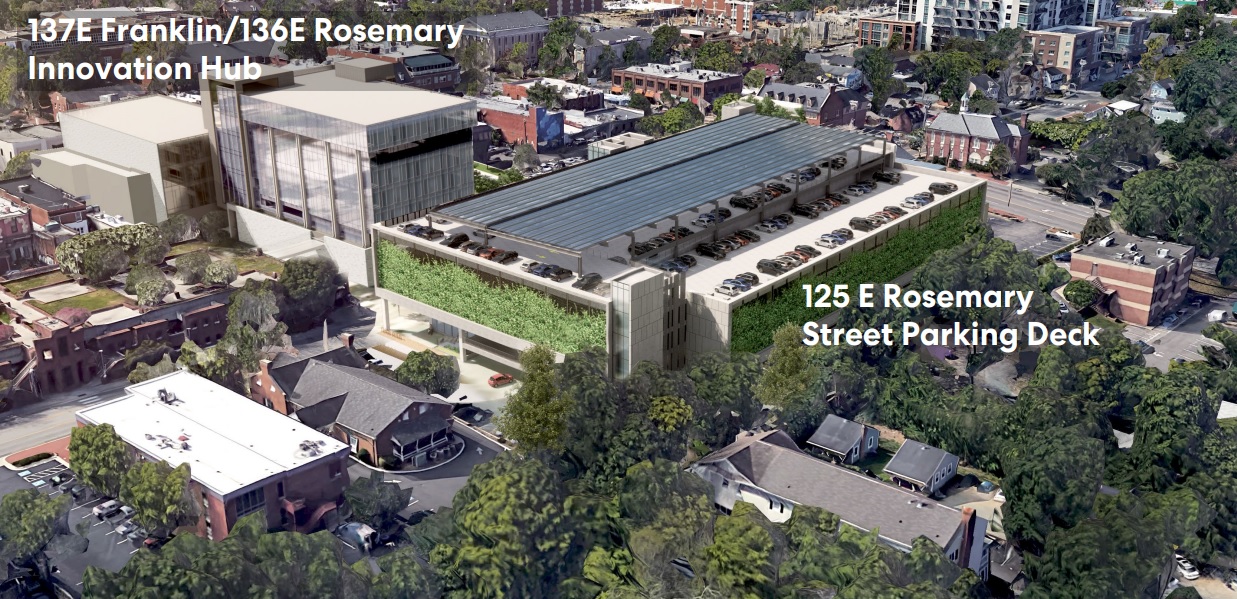A few weeks back I wrote about how a presentation from Chapel Hill Town Manager Roger Stancil had made it crystal clear that services would go down, taxes would go up or we could add to our tax base. With that in mind I attended a presentation Tuesday evening on “Retail, Housing, and Economic Development in Chapel Hill” by the town’s economic development officer, Dwight Bassett.
The presentation was filled with information on our expensive cost per acre (highest by far in the Triangle at $175,067), our comparative tax base (lowest at 16%) and the market opportunities available to the town over the next several years.
Statistics are not a language in which I’m fluent so hats off to Mr. Bassett for making this comprehensible to me and also for making it interesting. During the Q&A session following the presentation, someone referenced these comparisons and asked the fair question of (paraphrasing here) “But do we want to look like those other places?”
I found the answer in the drawings shown of the Downtown Framework and Action Plan (go almost to the end of the pdf linked to here). In it, I saw a walkable, enjoyable, sociable space with greater access than there is now- no matter your preferred mode of transportation. By creating more cross streets between Franklin and Rosemary, the town maximizes high ticket street frontage for developers (tax base help) while creating an approachable downtown with shorter blocks, more green space and likely drawing more places we all want and need to go. All this and a reduced dependence on residential property taxes? Sounds good to me.
To go back to that question of whether we have to give up our character in order to be more fiscally strong, I say the Downtown Framework shows us we don’t. We can maximize what’s available and still feel like the Southern Part of Heaven.
Where does this plan stand? From a town press release: “The Downtown Framework remains a draft plan as work has continued to refine it and the Town Manager placed a hold on it as issues related to Northside and Pine Knolls were worked on.”
The only negative takeaway from the presentation came during that Q&A session: Despite two entreaties that each person should ask only one question to allow for as much participation as possible, some people did not comply. The town has gone to great lengths to make this a participatory process; let’s not stand in each other’s way.
Finally, a big thank you to the 2020 leadership for organizing so many of these educational presentations. Chapel Hill has everything it needs to write and build a bright future.
Do you have a vision for Chapel Hill’s future? Please share it by participating in the 2020 Comprehensive Planning Process. Thoughts on the post above? Leave them below or write to me at Donnabeth@Chapelboro.com



Comments on Chapelboro are moderated according to our Community Guidelines